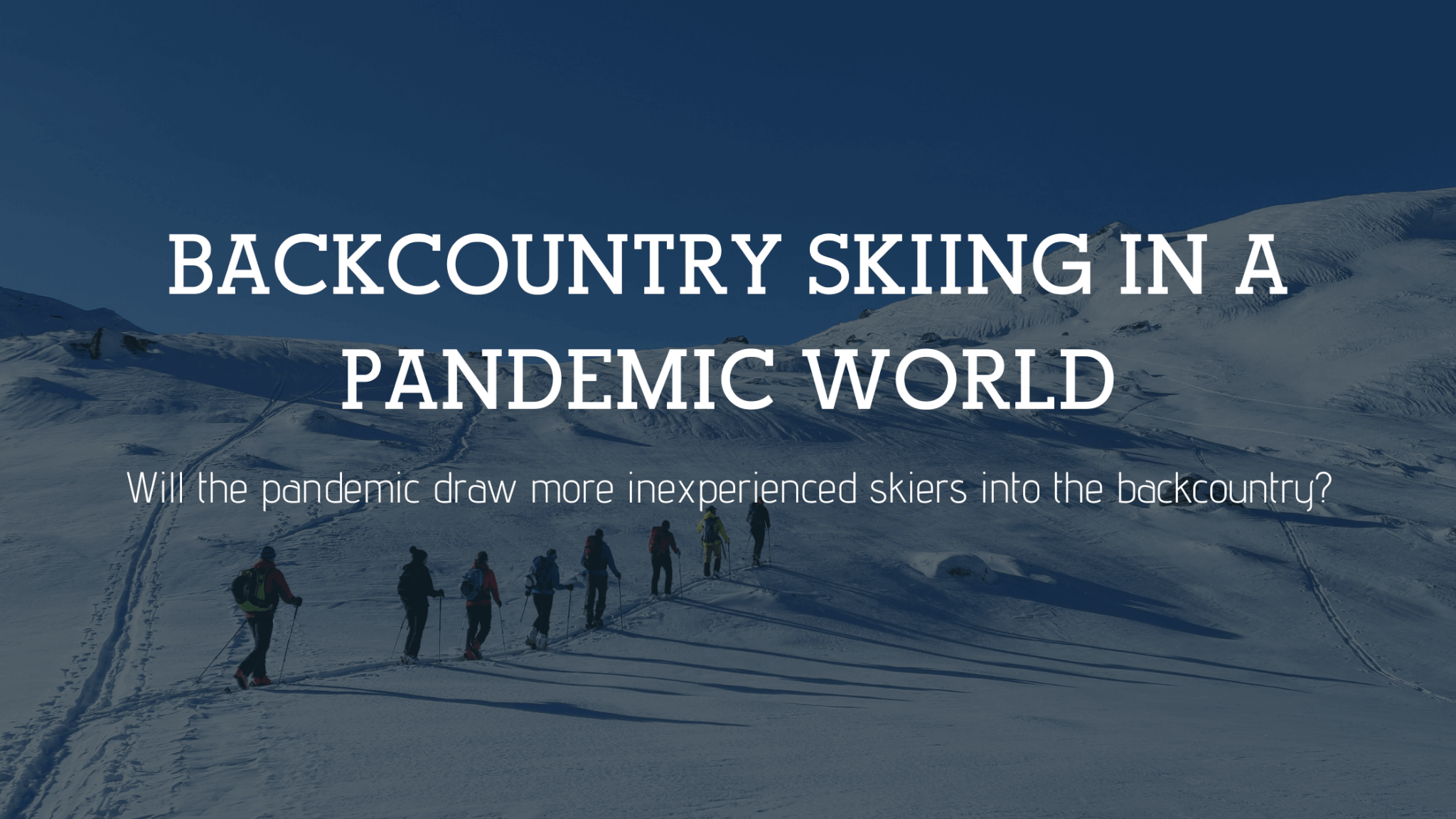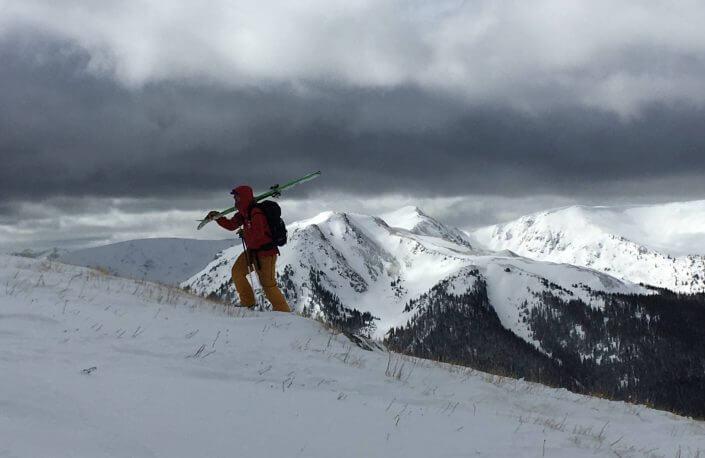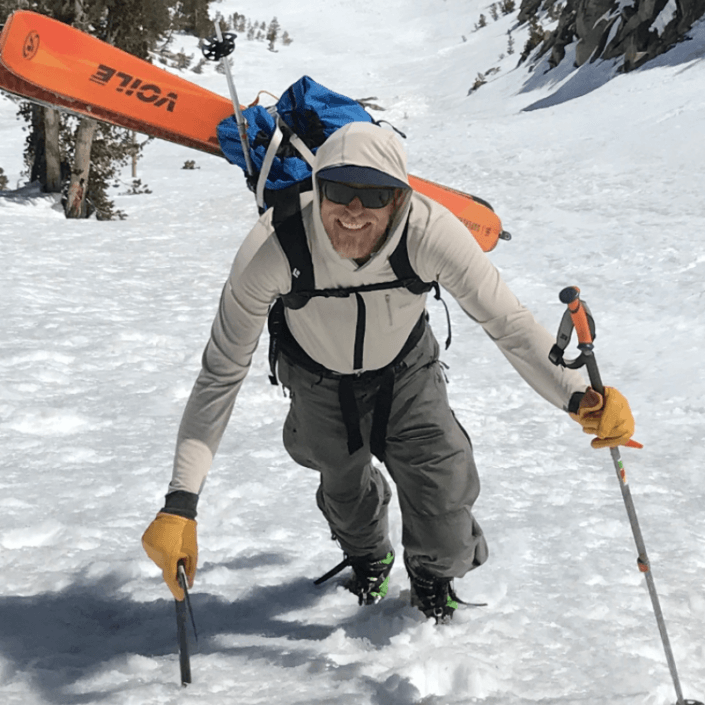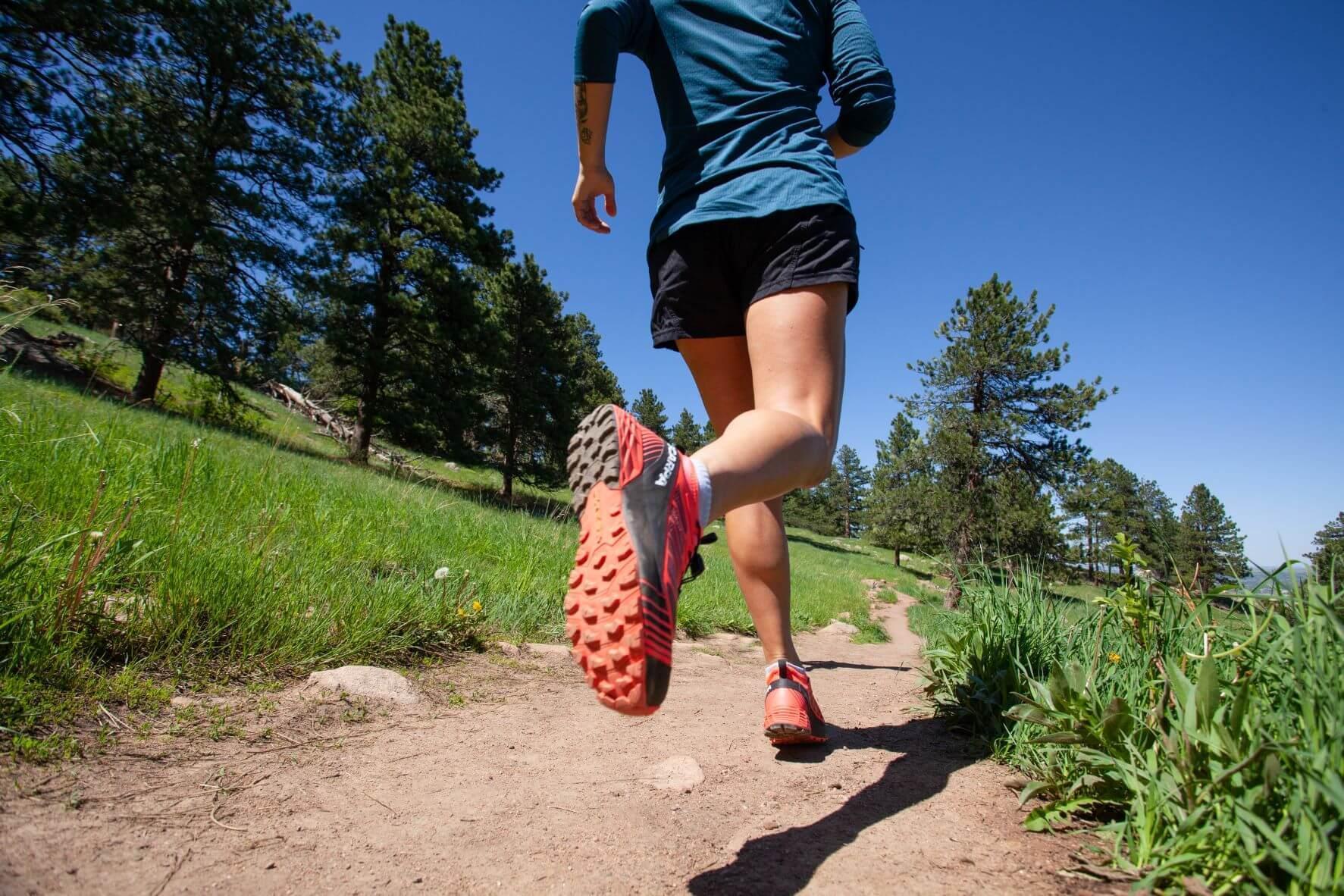Backcountry Skiing in a Pandemic World
The 2019-20 ski season saw a whopping 16 percent jump in skier visits from the previous year in the Rocky Mountain region, putting the total over 24 million skier visits, the 4th highest season since they began compiling skier visit data in 1978. With the number of skier visits regularly on the rise in Colorado, ski areas are becoming more and more crowded, lift lines getting longer, more people are taking to the backcountry. With the management of pandemic protocol currently at the forefront of all business planning and with folks continuing to seek access to their favorite outdoor activities, ski areas are attempting to anticipate if they’ll be able to get a reservation in a “pandemic world” for lift served skiing.
Snow and avalanche professionals may hold a unique perspective of this phenomenon. When the pandemic effectively closed most businesses, including ski areas, ski enthusiasts began looking for other ways to scratch the itch. Many skiers decided that it was the time to “try backcountry skiing.” Areas like Breckenridge and surrounding Summit County saw an incredible uptick in trailhead crowding and new users entering the backcountry. Ski guides, ski patrollers, avalanche professionals and the most experienced backcountry skiers mostly took a step back from their normal backcountry habits in order to mitigate risk and the potential of creating an emergency situation requiring assistance or hospitalization during the Covid-19 quarantine. The less experienced, however, made their way into well-known and easily accessed zones, creating a crowding in the backcountry that the aforementioned professionals often described as “scary,” “irresponsible” or “downright stupid.Backcountry skiing is not an entry level sport. Even those with years of experience seek out new educational opportunities regularly, discuss conditions with other experienced users, and avoid unnecessary risk. Many new users may not even know when they are in a risky situation or when conditions are not suitable for a given objective. From November – April, Colorado falls into the category of Continental snowpack. The continental snowpack is briefly described as shallow, fluffy, and faceted. Facets are weak snow crystals that are formed by extreme temperature gradients within the snowpack. When snow piles up on one of these weak layers of facets, it’s a recipe for dangerous conditions. Colorado’s snowpack is often referred to as the most dangerous and unpredictable in the world. In the 2019 ski season there was 25 American avalanche fatalities, eight that were in Colorado. With the uncertainty surrounding COVID and ski resorts, it is predicted that more skiers and snowboarders will be exploring the backcountry this winter. Backcountry is defined as any terrain outside of resorts which is not controlled and has no avalanche mitigation. While the backcountry is a great alternative to lift-access skiing, it is inherently dangerous and requires a continued education, experience, and humility.
PRO TIP: Let backcountry skiing be a lifelong journey. You can’t possibly learn everything in one, two, or even five years. Take your time. Let it be about discovery. When done right and safely, it will lead to the best days of your life.
- Backcountry Education is essential not only for keeping oneself safe, but other users in the immediate vicinity as well. Having many people on or under one slope in unstable winter conditions is dangerous and backcountry users should understand and practice this responsibility. Those who are new to backcountry skiing and snowboarding should seek a mentor or begin their educational journey with an outfitter or experienced guide.
- The goal of AIARE Level I is to provide a fundamental education which helps backcountry riders make safe and informed decisions in a backcountry environment, including how to identify avalanche terrain, understanding the formation of avalanche problems, how to use equipment such as a beacon, probe, and shovel, and how to plan and execute a route through complex and difficult terrain.
- New backcountry users should strongly consider an Introduction to Backcountry Skiing class before registering for an avalanche course. The equipment is quite different from traditional resort style equipment and the skinning technique does have a learning curve. Being comfortable on your backcountry ski equipment is essential for a better learning experience in an avalanche course. Read this article for more information on the difference between Avalanche Courses and Intro to Backcountry courses.
- AIARE Courses are an excellent way for skiers and riders to meet other partners and get information first-hand from experienced professionals.
- Going into the backcountry with a knowledgeable and experienced guide takes the guesswork out of planning a backcountry ski / snowboard experience. The guide has valuable terrain familiarity, is tuned into weather and avalanche conditions, plans a route, and creates a memorable experience for all participants. (also….guides know where the best snow is!)
- Your snow and backcountry education doesn’t end after you complete your Level 1. Less experienced adventurers should continue to seek education, hire professionals to fill in the gaps and teach specific skills, and spend as much time exploring as possible, even if some days don’t lead to epic turns.
We offer a full array of AIARE Avalanche Courses, Introduction to Backcountry Skiing and Splitboarding, Advanced Backcountry, Ski/Snowboard Mountaineering, as well as, private mentorships for those seeking targeted, one-on-one backcountry education. Learn more about our backcountry education courses today.

